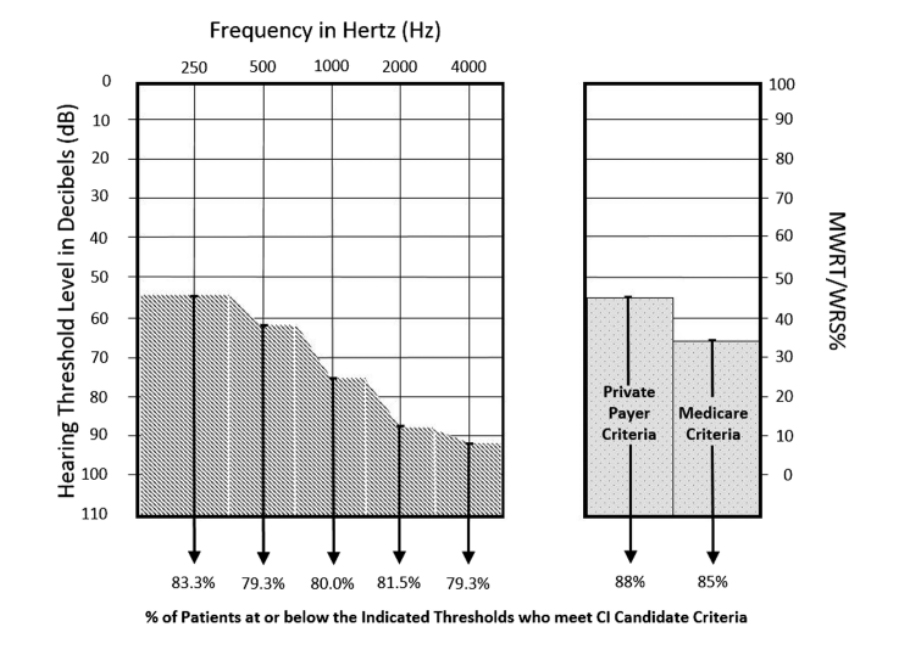Can findings on routine audiometry predict the results of a formal cochlear implant candidacy evaluation?
Bottom line: Routine audiometric findings can be used to identify patients who are likely to meet CI candidacy upon formal testing.
Explore This Issue
January 2017Background: Although cochlear implantation benefits have been well described, it is clear that the technology is underutilized. One contributory factor is that there are no established criteria on routine office-based audiometry to assist audiologists, hearing instrument specialists, and otolaryngologists in their decisions on whether to refer patients for a formal CI evaluation.
Study design: Retrospective, observational, diagnostic study of the charts of 139 adult patients evaluated for implant candidacy at a tertiary care center from June 2008 through June 2013.
Setting: University of Wisconsin–Madison, School of Medicine and Public Health.
Synopsis: With regard to hearing loss pattern, 75 were downsloping, 56 were flat, and eight were considered other. Researchers found that 83.3% of patients with pure tones at or below 54.7 dB at 250 Hz would meet CI candidacy upon formal evaluation using AzBio sentences in quiet. Eighty-seven percent of patients who scored 30.2% or less correct in the monosyllabic word recognition test (MWRT) qualified for a CI according to Medicare criteria using Hearing in Noise Test (HINT) sentences, 81.5% of patients who scored 35.6% or less correct in the MWRT qualified using AzBio sentences in quiet, and 93.3% of hearing loss patients who scored 39.2% or less correct in the MWRT qualified using AzBio sentences with background noise.
For downsloping pattern patients, 71.4% who scored 30% or less correct in the MWRT qualified when using HINT sentences; for flat pattern patients, 96.7% of patients who scored 33% or less correct in the MWRT qualified. Ultimately, 102 participants qualified for implantation. Limitations included a study population of adult patients who had already been referred for a CI evaluation and use of a recorded voice in presenting monosyllabic words (See Figure 1).

(click for larger image)
Figure 1. Summary showing the pure-tone and MWRT threshold values that significantly correlated with meeting candidacy requirements upon cochlear implant evaluation. The percentile scores in the bottom row represent the number of patients in the study cohort testing at or below the audiometric measure thresholds shown who then qualified for cochlear implantation. For pure-tone measures, the threshold values were generated through correlation with sentence-level discrimination testing using AzBio in quiet conditions and assuming Medicare candidacy criteria (40% or worse on sentence level discrimination tests). For the MWRT, the threshold values were generated through correlation with sentence level discrimination testing regardless of the type of material used (AzBio in quiet, AzBio in noise, or HINT in quiet). CI = cochlear implant; HINT = Hearing in Noise Test; MWRT = monosyllabic word recognition test; WRS = word recognition score.
Credit: Laryngoscope